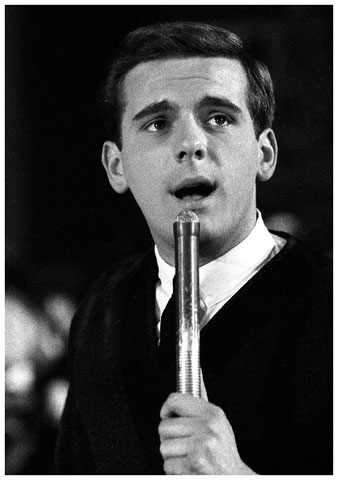Secondary Navigation Menu
Home > Events > Culture > The Transformation of Song in Quebec: the Era of Chansonniers and the Birth of Popular Music
The Transformation of Song in Quebec: the Era of Chansonniers and the Birth of Popular Music
The Heritage of the Forerunners
Song in Quebec took flight with the Quiet Revolution. Of course, author-composer-performers had paved the way. Félix Leclerc and Raymond Lévesque were the best known, but there were also Robert L'Herbier, Jacques Blanchet Jean-Paul Filion, Germaine Dugas and La Bolduc (Mary Travers) who wrote a few hundred songs during the years of economic crisis. However, the 1960s are credited with the unprecedented explosion of song that contributed to the awakening of Quebec.
Sing about the Country to Be
Two trends marked the world of song during this era: story songs and ye-ye singing. The first was written and sung by chansonniers inspired by Félix Leclerc and French singers such as Léo Ferré, Georges Brassens, Jacques Brel and Jean Ferrat. They praised the beauty of the country to be and the solidarity of its inhabitants, participating in the awakening of national affirmation. They performed principally in coffee houses, which were multiplying everywhere in Quebec, a unique phenomenon worldwide. The most famous among them was the Butte à Mathieu in Val-David.
Modish Youth
At the same time, popular music in Quebec was blossoming in Quebec with its ye-ye or go-go songs. Contrary to the chansonniers, ye-ye ne singers did not compose original songs, but interpreted French versions of songs in English. They were not overtly nationalist like the story song artists, but they showcased the French language in their own way. Idols during the wonderful yé-yé era included Michel Louvain, Michèle Richard, Pierre Lalonde, Renée Martel and, influenced by the Beatlemania storm, a slew of groups with bizarre names and extravagant, colourful attire. The most important consideration was that the look prevail over the style (translation - Le Soleil, December 9, 1994). Up to 800 groups emerged in Quebec during the 1960s, and Saint-Hyacinthe was the Liverpool of Quebec. As of 1962, modish youth could see their idols on the Jeunesse d'Aujourd'hui show broadcast by Télé-Métropole. It is in large part because of this television show that 30 000 45-rpm records were sold each week in the metropolitan region alone.




